It is a big problem when your chair won’t recline….
…but it’s quite another when your chair is stuck on recline!
How do we fix this issue?
Before you can begin fixing your office chair, you will first need to find out what is causing the problem.
There are a number of reasons why your office chair might be stuck.
Let’s go over a few of the most common ones now and how to fix them.
Table of Contents
1. Improper Technique
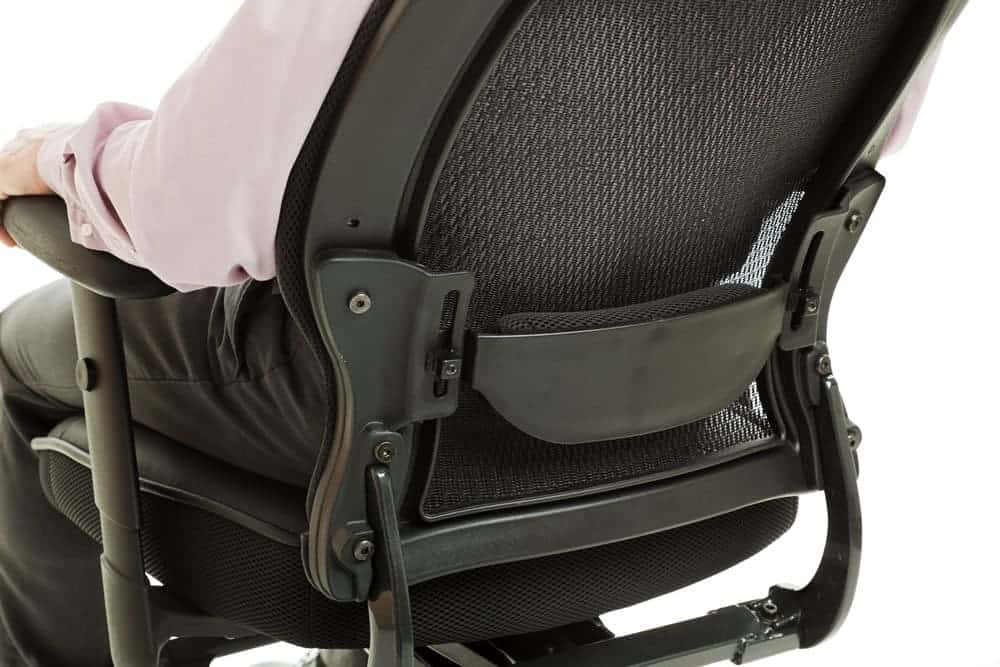
The most common reason why office chairs get stuck on recline is that proper technique is not applied when removing the recline lock.
This problem is all too common and just might be why your chair is stuck as well.
When you lean back to recline your office chair and push the recline rod, the tip of the rod is inserted into a hole on the lower part of your mechanism.
This prevents the recline tension spring from pushing your chair back into its normal position.
Because the tension spring is pushing upward on your seat, the rod gets pinned in place inside the hole.
This makes it very difficult to pull out the rod to release the lock.
How to Fix It
In order to solve this, you will need to learn how to remove the rod using the proper technique.
Before pulling the rod out to release the lock, lean back on your chair until it reaches its maximum recline.
This takes the pressure from the recline tension spring off of the recline rod.
Once the pressure is off, the rod becomes loose enough to be pulled out without much force.
Practice this technique several times and pretty soon it will become second nature to you. And you won’t have your office chair stuck on recline anymore.
2. Too Much Tension on Recliner Spring

What if your office chair is stuck on recline, and you attempt to unlock the rod using the proper technique we talked about above…
…but you can’t seem to lean backward on your office chair any further to loosen the rod.
This could be a problem with your recline spring having too much tension.
When the tension on the spring is very high, it can be difficult to push further back on your office chair to loosen the rod.
How to Fix It
To fix this problem, you will need to adjust the tension on your recline spring.
Most office chairs have a knob on the underside of the seat.
Turning this knob counterclockwise is going to decrease the spring tension while turning it clockwise will increase it.
You can check for a (+) and (-) label on the knob to be sure you’re turning it in the correct direction. Turning it towards the (+) will increase the tension and turning towards the (-) will decrease it.
You want to turn it towards the (-) to decrease the tension of the recline spring.
Turn the knob in small increments to prevent it from becoming too loose. Try giving it a ½ turn at a time and test it before turning it further.
When the recliner tension spring becomes loose enough, you’ll be able to pull the rod to unlock the recline easily.
If you want to learn more about your tension spring knob, you can read our article “What Does the Knob Under My Office Chair Do?”.
3. Rusted Recline Rod

If you have an older chair, there is a chance that your recline rod is stuck because of rust.
This is very common on chairs that have been kept in recline for a very long period of time.
Even if your office chair is kept indoors, the metal parts can still become rusted over time.
Rust is especially common in the areas where the coating has been worn down due to metal to metal contact.
How do you fix a rusty chair that is stuck in recline? Let’s find out!
How to Fix It
The best way to fix a rusty chair is to use a good penetrating oil to lubricate the stuck up parts.
We recommend using trusty old WD-40. This particular one has an easy-reach nozzle so you can lubricate the hard-to-reach spaces on your office chair.
- Everything you need in a good lubricant: Strong, fast, durable, targeted and safe. WD-40 Multi-Use with EZ-Reach...
- The flexible straw bends and sprays how you want it to, helping you reach the smallest of spaces
- For more than 65 years, professionals have trusted this "toolkit in a can" to help them accomplish a variety of...
Start by spraying a decent amount of WD-40 where the rod is stuck. You may want to flip the chair over if you need to get a better angle.
After spraying, let it sit for about 30 minutes to an hour.
When you come back to the chair, sit on it and gently rock yourself back and forth. This will help loosen up the stuck up parts.
While rocking the chair, try twisting the rod with your hand.
If the rod is still stuck, repeat the process two or three more times.
Keep doing this until the rod breaks loose.
When it is loose, give it a little more WD-40 and several twists and pulls to clear out the remaining rust.
You can also take an old toothbrush and give it a good brushing to remove the rust debris.
After wiping the excess oil from under your seat, your chair will be back in the game!
4. Dented Recline Rod
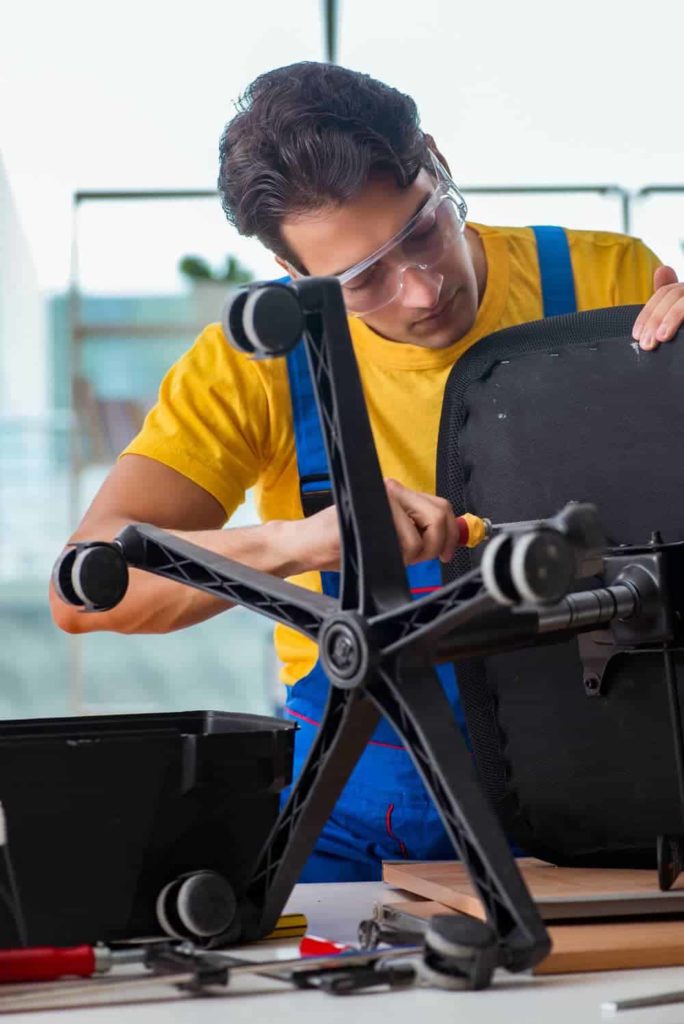
Another reason your office chair may be stuck on recline is because of a dented recline rod.
The rod that locks your chair in recline is not indestructible.
If too much weight is applied on the chair, this small rod can dent.
If it gets dented while on the recline position, it can get stuck.
When the rod is stuck, you won’t be able to get your office chair out of the recline position.
How to Fix It
Fixing a dented recline rod is going to take some patience.
You will first need to examine the rod to see how dented it is.
Flip the chair over and use a flashlight to get a better view of it.
If the dent isn’t very severe, try wiggling the rod free.
Have someone sit on the chair and lean back on it while you work on the rod.
Twist it and pull on it vigorously until it breaks free.
Once the rod is free, look for the small pin that keeps it in place.
This pin is usually located near the brace that holds the rod. Unfasted the pin using a pair of pliers.
Place the rod on a hard flat surface and give it a good pounding with a hammer to straighten out the dent.
Go over it several times to try to get it as straight as you can.
When you’re finished, put the rod back in place and lock it with the pin.
If the rod refuses to come off when you try wiggling it out, it may be time to replace your office chair mechanism.
5. Damaged Recline Tension Spring
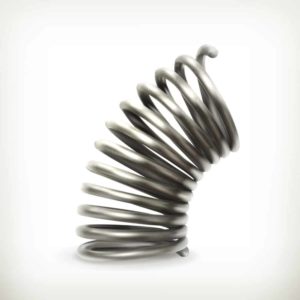
Another common problem is that your office chair isn’t exactly “stuck” on recline…
…but that it won’t go back into its normal position when you release the recline lock.
When this happens, it is always a problem with your tension spring.
The tension spring is what pushes your office chair back into its normal position.
So when it gets dislodged or damaged, your chair falls backward into a recline position unless you lock it.
How to Fix It
Before making any repairs, you first want to check if your tension knob is not just loose.
Look for the label on the tension knob and turn it towards the (+) until you can get it tight.
If this doesn’t fix the problem, then you can move on to the repair.
The simplest repair that can be done is to replace the entire mechanism. Refer to our How to Fix: Office Chairs section on our website for more information on how to do this.
We recommend this mechanism by RepairPartsOnline
- The pivot point of this style of tilt mechanism is further forward than on conventional tilt mechanisms helping to...
- 7.87" x 5.95" mounting screw hole pattern (mounting hardware not included)
- Single lever for gas cylinder height activation / adjustment and tilt lock-out
If you want to probe further, you can take apart your mechanism and try to locate the tension spring.
Read our article on “How to Take Apart an Office Chair” to get a better idea of how this is done.
Every chair is different, but you usually only have to remove a few screws to get to the tension spring.
If your tension spring is merely dislodged, placing it back into position before reassembling everything will fix the problem.
If you find that your tension spring is broken, it might be time to replace your office chair mechanism.
Conclusion
There you have it! We’ve tackled 5 of the most common reasons why your office chair might be stuck in recline.
So the next time you find yourself in a ‘sticky’ situation with your office chair recline, you’ll know exactly what to do!

My name is Vance, and I am the owner of To Ergonomics. Our mission is to improve your workflow by helping you create a supportive and welcoming environment. We hope that you’ll find what you’re looking for while you’re here.

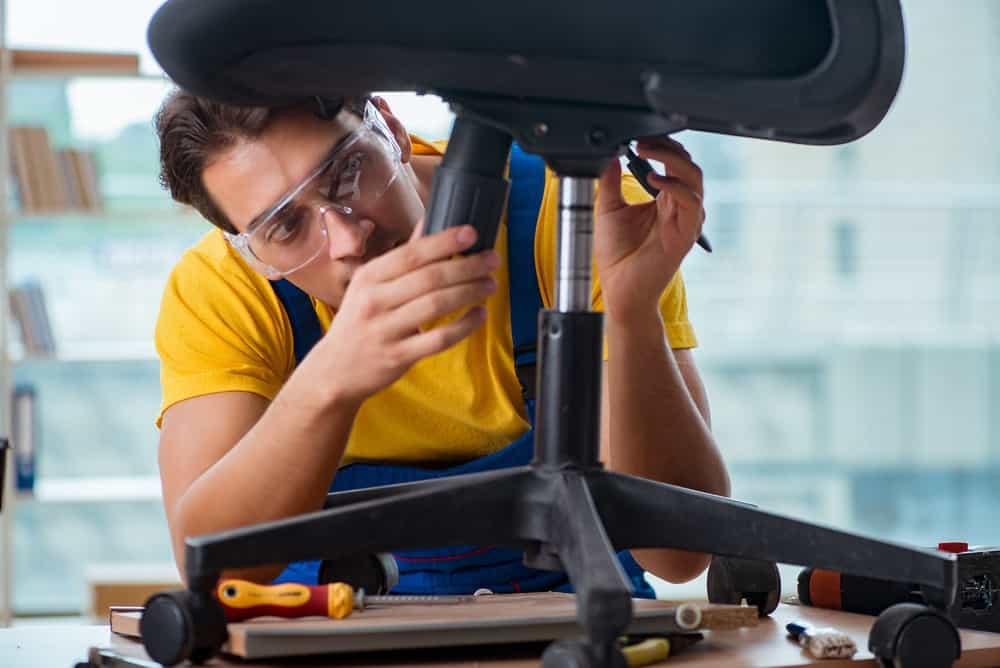

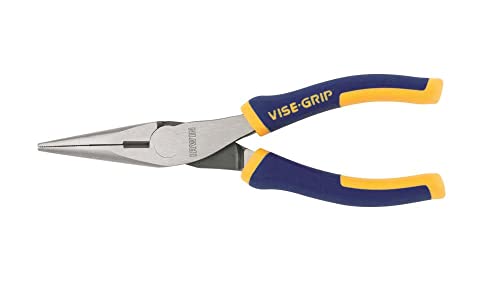


Dave
Thursday 16th of September 2021
Pictures of the mechanics would help.